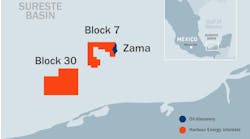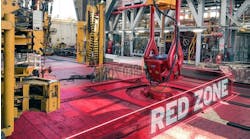In 2003, Bill DeWitt, Jr., the owner of the St. Louis Cardinals baseball club, initiated a transformation in the Cardinals’ talent-acquisition business processes. He identified significant inefficiencies in that portion of the business and began inquiries to find out whether alternative approaches might be appropriate. He reached this conclusion despite the success of his team over the preceding decade.
The person he found to spearhead the change was Jeff Luhnow, a former McKinsey consultant and businessperson whose experience was primarily in technology startups. He was a baseball fan but not a “baseball man.” He did not fit the accepted criteria for a role in baseball operations, but he believed strongly in the value of analytics as a business tool. He treated the problem like a McKinsey study and analyzed where the Cardinals and the industry were at that time, where the Cardinals wanted to be and how they might get there. He concluded analytics would improve the talent acquisition process.
Ideally, this made sense, but practically, there was intense resistance to change. The traditional method of “5 tool” scouting (run, throw, catch, hit, hit for power) was deeply entrenched. It was in use for more than a hundred years, and it was producing success for the Cardinals. The response to the new technology was, “We are winning now. Any change could be a negative. We know best. Leave us alone so we can do our job.”
DeWitt would have none of it. He was sensitive to the position of those who had been serving the organization well for years, but analytics would be added to the business so that the Cardinals could exploit the industry’s talent acquisition weakness. Period.
In the end, DeWitt’s decision led to an important breakthrough for baseball. Analytics (including predictive analytics) is now an integral part of talent acquisition throughout baseball. The Cardinals secured a first-mover advantage over the rest of the league for a few years, but many of the believers in the old way of working left the Cardinals organization. Eventually, Luhnow also left the Cardinals to become the general manager of the Houston Astros.
How do the lessons of leadership and analytics apply to oil and gas?
For geoscience, the transformation to 3D seismic and integrated workflows is an example of change through leadership within E&P. It began more than 35 years ago, and the new methodologies have produced profound improvements in exploration. It is similar to the baseball example in that oil and gas executives insisted on making the transition to new computerized methods a success because 3D seismic improved exploration performance, and industry analysts favored companies that adopted these new methods.
While this transformation in geoscience is largely complete, reservoir engineering is a different story. This domain remains bound by habits and patterns linked to the past.
For reservoir engineers, simulation has been the foundation for reservoir performance modeling for many years just as scouting was in the baseball world. This entrenched approach often fails to produce an optimum field development plan because production forecasts can be quite different than actual production. Overcoming this shortcoming is possible with new reservoir engineering technologies that apply big data analytics to discover field development options that traditional geological modeling and reservoir simulation tools cannot identify. A good example is FOROIL technology that has boosted production without capex in multiple mature fields. But applying analytics with massive parallel computing optimization is a threat to historical ways of working, so engineers react aggressively to neutralize or eliminate the FOROIL approach because the solutions it discovers do not agree with their experience. Overcoming this roadblock to progress is where leadership must play a critical role in transformation.
According to Steve Johnson, author ofWhere Good Ideas Come From: The Natural History of Innovation, strong leadership is required to overcome “environments that block or limit new combinations by punishing experimentation, by obscuring certain branches of possibility, by making the current state so satisfying that no one bothers to explore the edges.” Because of prior experience, it is not apparent that change is a necessity, but most E&P executives would agree that there are inefficiencies in the reservoir management and field development segments. New approaches such as big data analytics integrated with reservoir physics, when applied in a balanced process, can help address these inefficiencies and deliver significantly improved field performance.
Mark Lochmann
Senior Production Analytics Advisor
Qittitut Consulting


